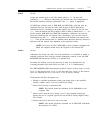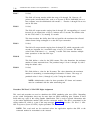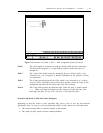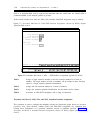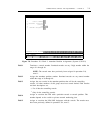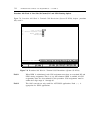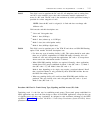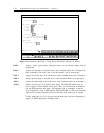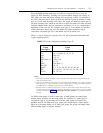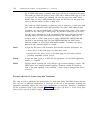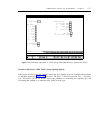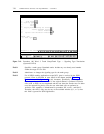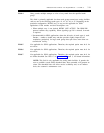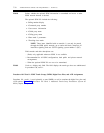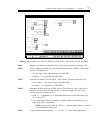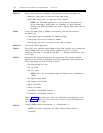
ADMINISTRATION OPTIONS AND REQUIREMENTS — SYSTEM 85
7-25
Incoming ISDN dynamic trunk type 120 calls (to a System 85) may or may not
specify an NSF. Generally, incoming calls from the public network will specify an
NSF while calls from the private network will not specify an NSF. For example, if
the NSF is delivered and it shows an SDN call, then the System 85 defaults to trunk
type 46. For all other incoming NSF values, the switch will default to trunk type 30.
For those incoming calls which do not deliver an NSF the switch will either use those
interface endpoint trunks that are translated in procedure 116 or use a default that is
dependent on the type call. For example, trunk type 41 is the default for switch-to-
switch connections, trunk type 30 is the default for public network-to-switch
connections, and trunk type 108 is the default for host-to-switch calls.
Table 7-2, Trunks Supporting Signaling Type 20, shows permitted field entries that
support signaling type 20.
TABLE 7-2. Trunks Supporting Signaling Type 20
Trunk Trunk
Description
Type
CO
16, *17 (Note 1), 18, 19, 20
Data
100—107
DID *30, *31
DMI (Note 2)
*108, *109
FX
21—25
ISDN
120 (Note 3)
M/S TIE
70—78
Special
2, 5, 6, 50—58, 62, 65—67, 90—93
32—40, *41, *42, *43, 44, 45, *46, *47
WATS
26, *27, 28
TIE
NOTES:
1. Trunk types preceded with an asterisk (*) may be selected by trunk type 120 on an as needed Call-By-Call
(CBC) Service Selection basis.
2. Trunk types not included in these categories may not be translated for ISDN-PRI service. Most conventional
trunk types specify, as a part of their name, an in/out signaling sequence. Actually, these signaling sequences
are disabled and type 20 signaling is used exclusively over ISDN facilities.
3. Beginning with the 1.0 software load of Generic 2 and the 1.2 software load of System 85 R2V4 digits may
be inferred when using the ISDN-dynamic trunk type. The default of 30 infers DID (if necessary). A default
of 46 infers AAR/ARS. (See Appendix C,
Administrative Procedure Summary, for a complete explanation of
this field.)
For ISDN trunk groups as well as other types of trunk groups, the entered type
defines feature operation for the trunk group. For example, if a trunk group is
assigned the type of 19, incoming calls over this trunk group are routed to the
attendant console. On DID trunk type groups, the switch expects station number
digits on all incoming trunks; on tie trunk type groups the switch can handle either
station number digits or network numbers.



